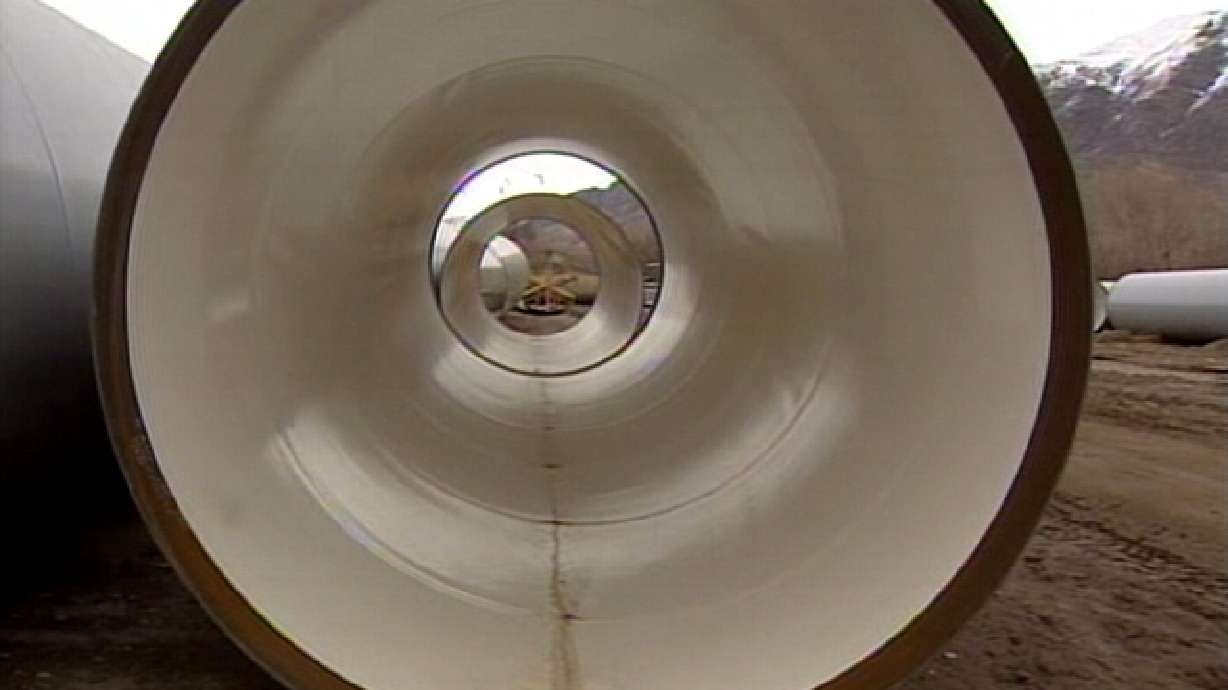Estimated read time: 4-5 minutes
This archived news story is available only for your personal, non-commercial use. Information in the story may be outdated or superseded by additional information. Reading or replaying the story in its archived form does not constitute a republication of the story.
SALT LAKE CITY — Some of the most ardent critics of a pipeline that would have tapped a hydrologic basin straddling the Utah and Nevada border are celebrating what they say is a huge victory because Snake Valley is now off limits to pumping.
"This is welcome news to the west desert counties and really all the counties that care about Utah water," said Mark Ward, an attorney who has been hip-deep in negotiations on behalf of several Utah counties over the proposed Snake Valley groundwater pumping.
"It is a good decision in that it respects what we have been saying for years," said Ward, a senior policy analyst with the Utah Association of Counties.
The Bureau of Land Management on Friday issued a final environmental impact statement on a right-of-way application for the pipeline proposed by the Southern Nevada Water Authority.
Although not official until at least Oct. 1 and up for review and comment by the public, the route settled on by the federal agency steers clear of Snake Valley and under the analysis allows withdrawals of up to 114,129 acre-feet a year of water from Spring, Delamar, Dry Lake and Cave valleys.
That water would be conveyed through a 300-mile pipeline to serve the Las Vegas area and neighboring communities of Henderson and Boulder.
Related:
Tapping the aquifer in Snake Valley, where Utah ranchers and farmers depend on wells and springs for their livelihood, has been the bedrock of a controversial water war pitting Utah interests against the water authority.
Snake Valley occupies both states, but much of the groundwater actually starts as precipitation in the mountains on the Nevada side, where the authority proposed to pump. But because water would have been taken from a "shared" basin, the two states were required to craft a water-sharing agreement that proposed to divvy up how much water each state was entitled to.
Although inked and ready for signature, the agreement has been put on hold pending resolution of challenges to water rights applications and may now be unnecessary.
Ward said he believes the BLM decision to keep the pipeline out of Snake Valley more than likely nixes the need for the agreement.
"With no water rights and no right-of-way in Snake Valley, there is no reason to go forward with the interstate agreement," he said. "What they do with their water is their business. It became the business of Utah when they wanted to intercept thousands upon thousands of acre feet of water that flowed into Utah."
Millard County Commissioner Daron Smith and Salt Lake County Mayor Pete Corroon also praised the decision.
"We've always supported a no-Snake Valley alternative," Smith said. "There is no extra water in Snake Valley. The system is in balance now, and there is no way they could have withdrawn water without having a huge impact."
There is no extra water in Snake Valley. The system is in balance now, and there is no way they could have withdrawn water without having a huge impact.
–- Daron Smith, Millard County
Corroon, who pushed hard against the SNWA proposal because of the feared dust-blown impacts to Salt Lake County's already polluted air, said the BLM decision is a victory for Salt Lake County.
"We are happy that the big Las Vegas straw will not be coming into Utah," he said. "We won't have to see the potential dust bowl that could have been coming our way if they had gone into Snake Valley."
While many Utah officials were cheering BLM's pending approval of the right-of-way, others panned the fact that any alternative was settled on at all. Of particular concern is that pumping would be allowed to occur in Spring Valley — adjacent to Snake Valley — and the impacts could be just as bad to Snake Valley because of interbasin flows, according to some.
Juab County rancher Cecil Garland said excluding Snake Valley from the groundwater development is a “pyrrhic and possibly temporary victory that ultimately fails to protect the valley from the impacts of excessive pumping in adjacent Spring Valley”.
The project, critics contend, should be rejected outright because of its far-sweeping environmental consequences, including those to Great Basin National Park.
“While further review of the environmental impact report is needed, the National Parks Conservation Association remains deeply concerned about potential dust bowl conditions created by the water mining project, which would spoil Great Basin National Park’s famed dark night skies, noted as the darkest in the lower 48 states,” said Lynn Davis, Nevada field office manager for the National Parks Conservation Association.
“The threats of this water mining project are far reaching: it could be built at anguishing public expense, could dry up the area and plunder Great Basin National Park, threaten the region’s rural life, and create health issues that would multiply economic and social losses.”
The water authority has been pursuing the groundwater development project as a way to stave off the effects of drought in what is the nation's most arid state in the country. Its pursuit of the project has reached a new level of determination and urgency in light of an over- appropriated Colorado River — which supplies 90 percent of the area's water needs — and a shrinking Lake Mead.









